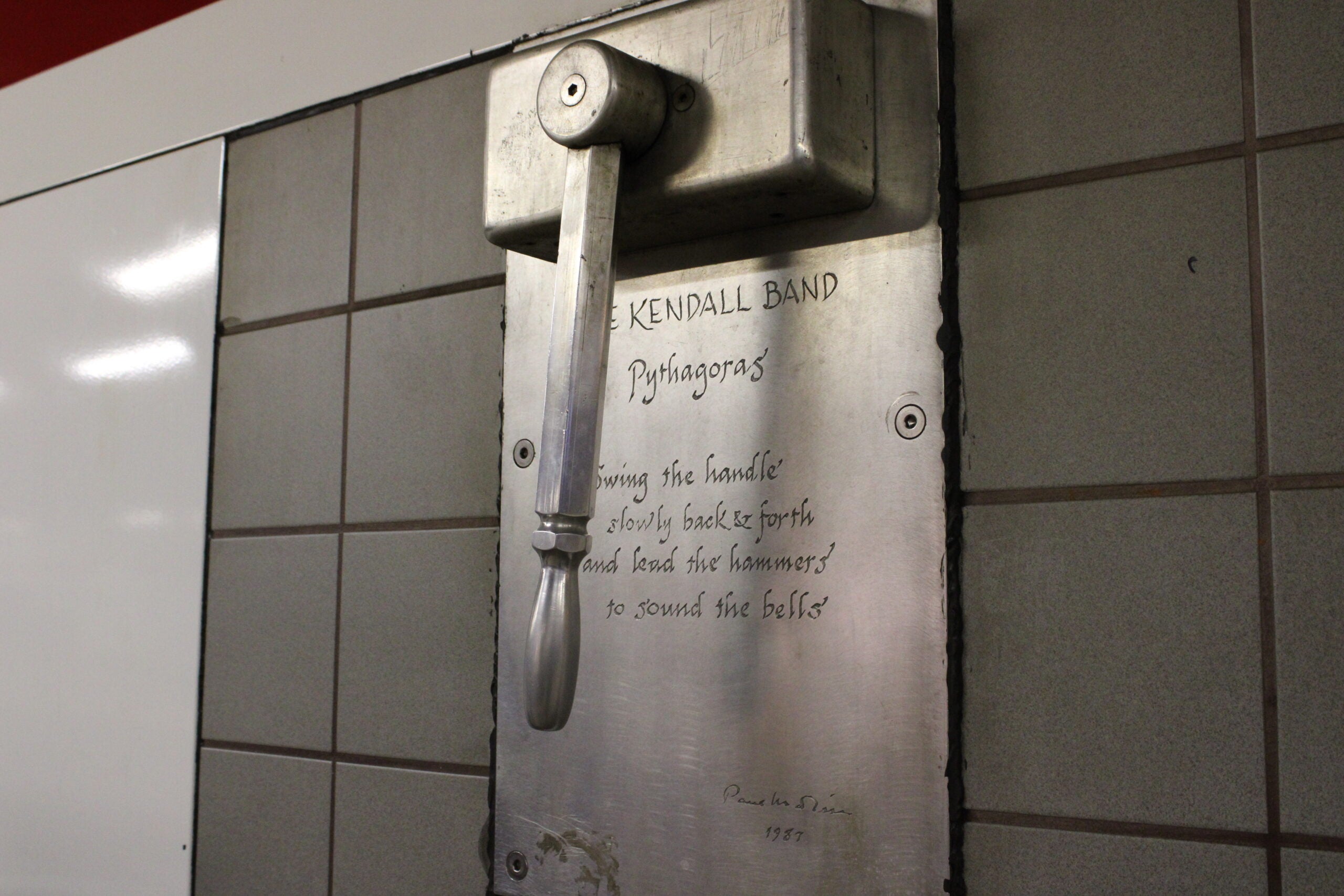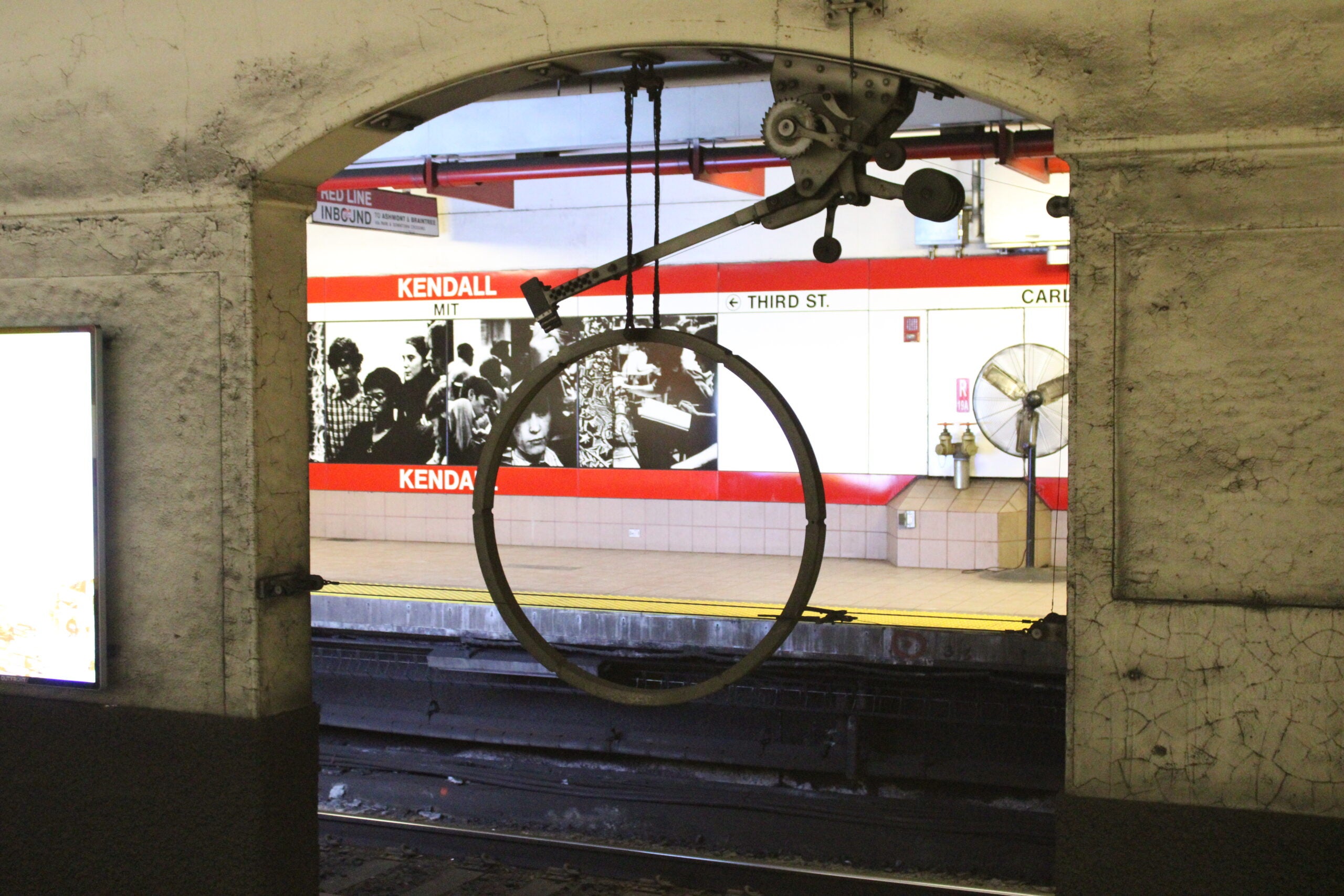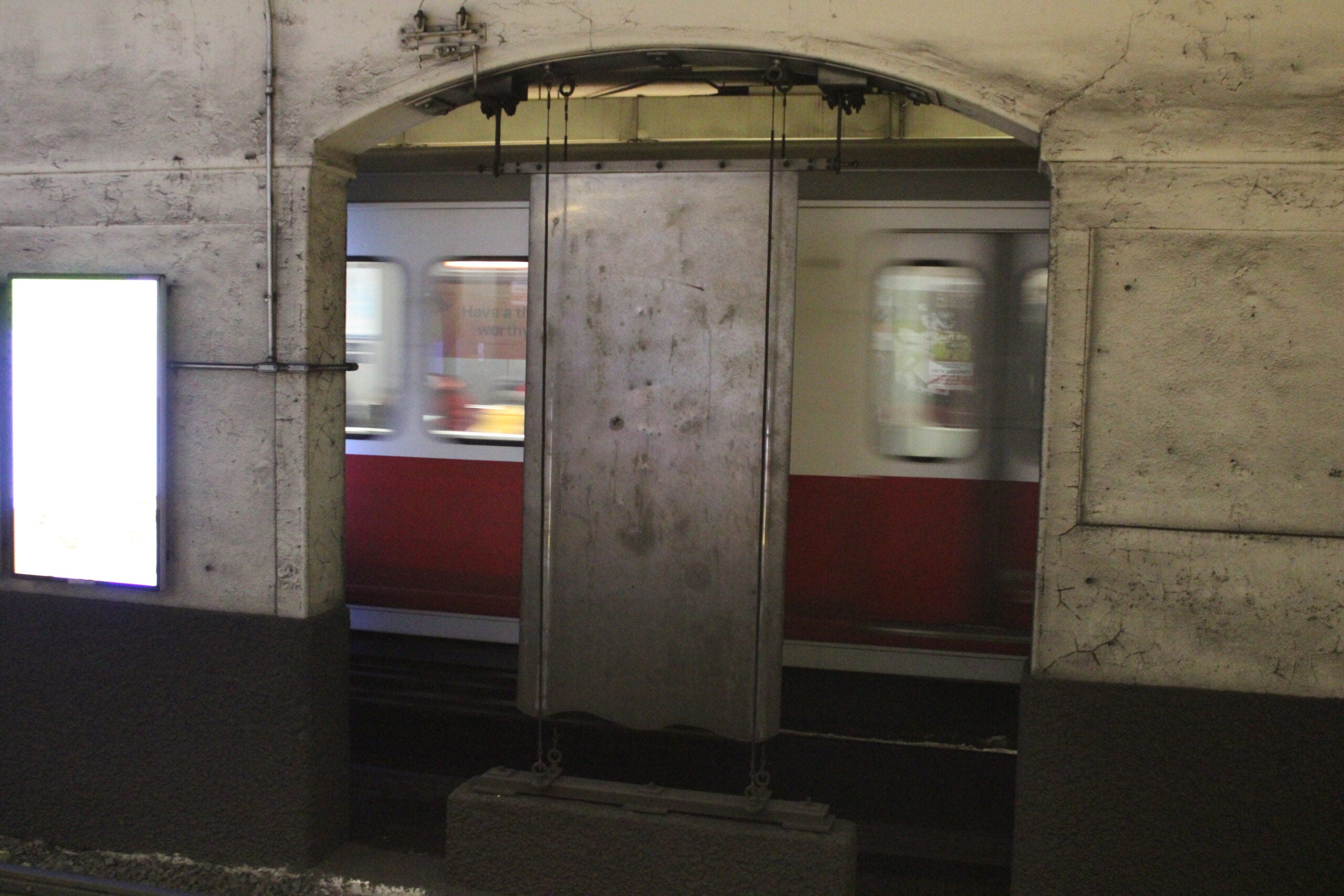Wickedpedia
“Kendall Band,” an interactive, musical sculpture installed in 1987, includes 50 feet of large chimes tuned to B minor.
The MBTA has more to worry about than upkeeping public art, but the murals, sculptures, and poems can keep the waits along a commute a touch more enjoyable.
For varying amounts of time since its installation in 1987, the “Kendall Band,” an interactive sculpture between Kendall/MIT’s outbound and inbound tracks, could chime over the din of a Red Line train.
Commuters may just see long, hanging poles at the Cambridge station, but the Band is actually three separate instruments, all theoretically operational with levers on the platforms. However, the Kendall Band and its instruments are currently in varying states of disrepair.
“Pythagoras,” one of the instruments, comprises 16 large bells in a 50-foot row, tuned to B minor, and is the focus for commuters. Swinging hammers strike the bells, which chime lightly over the everyday sounds of the T.

“Galileo” is a piece of sheet metal, which the artist Paul Matisse, grandson of Henri, calls “musical thunder.” “Kepler,” a ring 55 inches in diameter, can echo through the station for up to five minutes. When it’s operational, the resounding F sharp is an accompanying perfect fifth to the B minor Pythagoras.
As of now, the Kendall Band does not work. In fact, the levers for Kepler and Galileo are at the Massachusetts Institute of Technology, senior lecturer Mike Tarkanian said. He worked with students to maintain the musical sculpture starting in the late 2000s.
When has it worked?
According to Tarkanian and former MIT professor Steve Drasco, Matisse maintained the sculpture for years after its installation.
“He had built bells similar to this all over the world, but this was one of the super early ones,” Tarkanian said. “He hadn’t figured out some of the issues yet, so he was sneaking in at night and repairing it over 20 years.”
While looking for someone new to maintain the sculpture, which originally cost $90,000, in the 2000s, the MBTA and the artist came to a stalemate. Then, MIT students came into the picture.
Tarkanian said he, eventually along with the now-defunct Kendall Band Preservation Society, did a major overhaul of Pythagoras and would tighten up the levers sometimes more than once a week. The group worked on the tracks at night and on the platforms during T hours. The society even had a rededication in 2011 to mark Pythagoras’s restoration.

Drasco, a former MIT lecturer now working in Scotland, first saw the Kendall Band as a graduate student. When he began teaching at MIT, he took over Tarkanian’s role as volunteer caretaker in 2016.
“It seems like a surprise gift from the city to you,” he said about the sculpture.
Drasco, along with two students, worked only on the platforms to get Pythagoras chiming again in 2017. The group never worked on Kepler or Galileo, which Drasco said has been compromised to make room for electronic advertisements.
“I took that to be depressing because it occurred to me that that probably meant that Galileo would never work again,” he said. He last saw the sculpture in 2019.

Tarkanian said the levers remain at MIT “waiting to be put up” by anyone who would take over the reins of the upkeep. As of now, no one from MIT has stepped up.
“It’s a difficult situation, because I think it’s a lot of work. It proved to be too much work, I think, for volunteers,” he said. “I think the T obviously has bigger issues than worrying about public art.”
The MBTA agreed in a statement.
“We value the installation of art in our stations to enhance riders’ transit experience,” a spokesperson said. “At this time, the MBTA is focused on projects directly related to safety and reliability as the T works to rebuild its aging infrastructure. With billions of dollars in work needed to modernize the system, the MBTA must be strategic in targeting its efforts toward infrastructure work that brings maximum benefits to hundreds of thousands of daily riders.”
Newsletter Signup
Stay up to date on all the latest news from Boston.com







